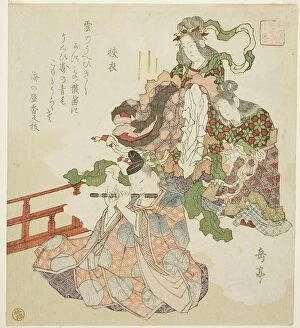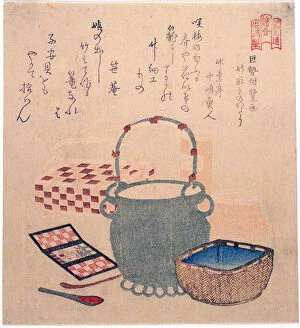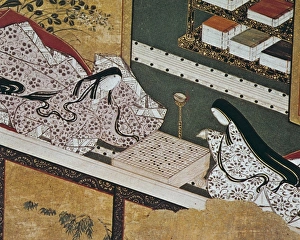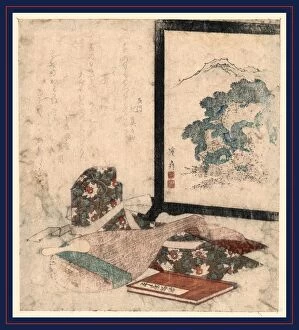Monogatari Collection
Monogatari, a term derived from the Japanese word for "tale" or "story, " encompasses a rich literary tradition that dates back centuries
All Professionally Made to Order for Quick Shipping
Monogatari, a term derived from the Japanese word for "tale" or "story, " encompasses a rich literary tradition that dates back centuries. One of the most notable figures associated with this genre is Murasaki Shikibu, a renowned Japanese writer who lived during the late 10th and early 11th centuries. The Genji Monogatari Emaki, an illustrated version of Murasaki Shikibu's masterpiece The Tale of Genji, provides us with a glimpse into the captivating world she created. Created by Kubo Shunman in 1804/18, these illustrations bring to life the enchanting narrative that has captivated readers for generations. Another fascinating example is found in Fashionable Brocade Pictures of the Tales of Ise: yo. This Edo period woodblock print from c. 1772-73 depicts a man reuniting with his former sweetheart who now serves in a provincial household. It showcases not only the intricate storytelling but also highlights societal dynamics prevalent during that era. In The Beach at Sumiyoshi illustration from The Tales of Ise (1600-40), Tawaraya Sotatsu beautifully captures Prince Genji's carriage against an ink-drawn backdrop. This artwork transports us to ancient Japan and immerses us in its cultural tapestry. Heike monogatari to biwa to tsuitate portrays both literature and music as it features a lute next to standing figures representing characters from Heike Monogatari—an epic tale recounting historical events mixed with fictional elements. Hosoda Eishi's artistic rendition of Tale of Ise (Ise monogatari) between 1789 and 1795 offers delicate brushwork depicting scenes filled with emotion and beauty—a testament to Eishi's talent as an artist capturing moments within this timeless story.





















